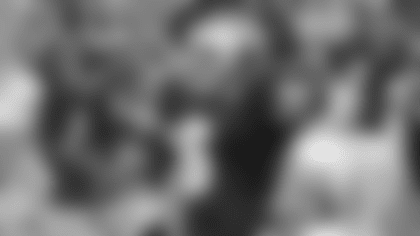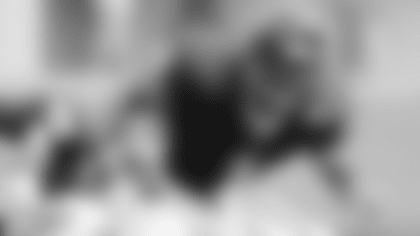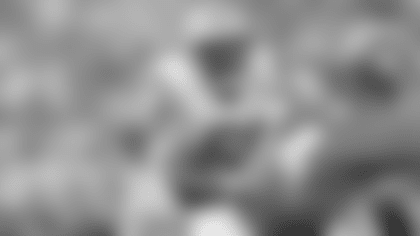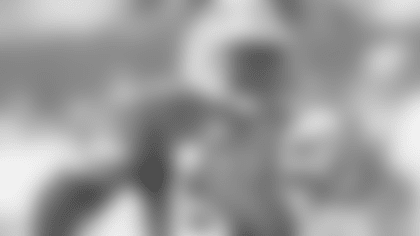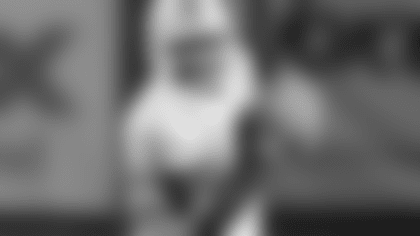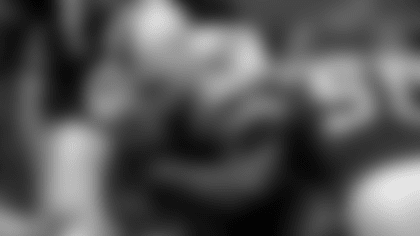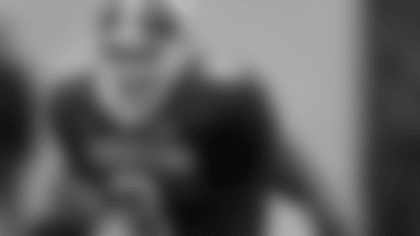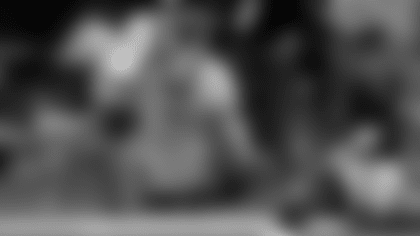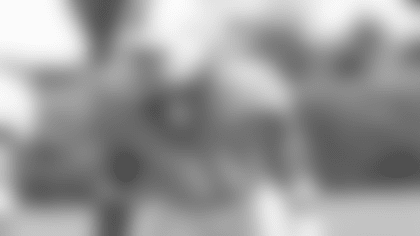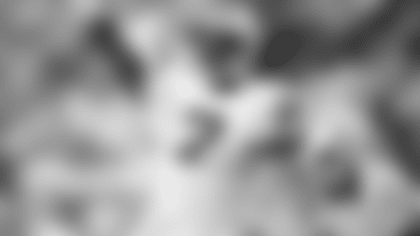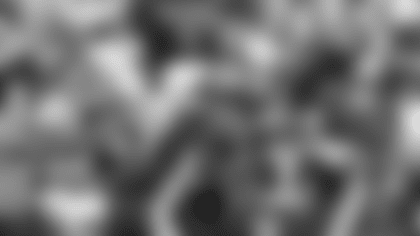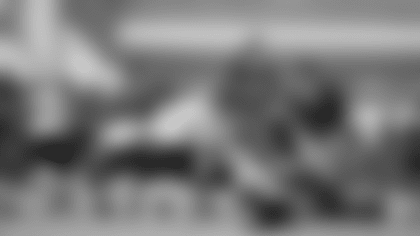One gap, two gap. Over, under. Strong side, weak side. We hear these terms in regards to the Patriots defensive line on an almost daily basis during the season. But what do they all mean? How does Bill Belichick's scheme affect the way the Patriots defensive linemen are asked to go about their business? What are the differences between the Patriots 3-4 alignment and the more traditional 4-3 set up? We posed these questions to the players who man these all-important spots, and here's what they had to say ...
Bobby Hamilton, Left Defensive End
"The most important thing for all of us is staying together in the huddle and making sure everyone gets the right call so we all know what we're doing. The next thing you need to do as a defensive end is look at the [offense's] scheme — what kind of formation they're in, what set they end up in. Then you communicate what you see right on down the line.
"It's also important for defensive linemen to really study what the offensive lineman's strengths and tendencies are. You might face a guy who likes to scoop block or he may be more adept at base blocking. Before you go in the game, you have to know these things and study your own technique and your responsibility.
"[For the defensive ends] we're concentrating on the offensive tackle and watching how he sets up. Basically, you have to attack him and get to the ball. If we're playing a two-gap alignment and they're running the ball, you need to anchor and stay down low. If the ball comes your way, you play the block and play your responsibilities. I would have B gap and C gap in that case, so I would have two ways to go. (B gap is between the tackle and guard and the C gap is between the tackle and the tight end).
"If he runs outside, you have to make him bounce out and contain. If he runs inside, you have to squeeze him down. If you're able to get off the block in time, you have to make that tackle.
"If the situation calls for us to be playing one-gap, you have to shoot whatever gap you're responsible for. For me that would mostly be B gap. That system and style is a little more enjoyable for us because it allows us opportunities to make some big plays. If you do your technique right and you get into your gap and then the ball comes, that's how you make the big plays."
Garrett Johnson, Nose Tackle
"The first thing you're doing when you break the huddle is looking at the way the offense lines up. They come up to the line and then we listen to our call for any checks that might be made from [after we broke] the huddle. Maybe the [opposing] linemen have some tendencies that you know about so you're looking for anything like that that maybe could give you a slight advantage.
"Some of the things we might be looking for are if they're leaning forward on their hand or sitting back in their stance. Generally, if you see a guy leaning, it usually means he's preparing to fire out for a block on a running play. If they're sitting back on their heels, usually they're preparing to get back in their pass-blocking stance to protect the quarterback. When you notice these things, it can help you out a great deal.
"Our defense is a two-gap defense so I have the responsibility for both A gaps against the run. (The A gaps are located between the center and guards on both sides). That means I have to beat the guy in front of me and then keep control of the two gaps. I have to make sure not to get knocked back off the line. Basically it's about occupying space so the linebackers can come in and make the plays.
"On a pass play, you're just trying to get off as fast as you can to make a move and get to the quarterback. You pretty much try to see what the linemen are doing — are they going to slide toward you or do something else to you? — and then get off the block and try to make the tackle.
"You're really trying to collapse the pocket as much as you can because realistically from the nose you're not going to get too many free shots at the quarterback. If you can push the center back and not allow the quarterback to step up in the pocket, then you've done your job. It's important to keep the quarterback in front of you and not allow him to run. More and more of these quarterbacks out of college are running, so you have to be careful not to allow them too much room."
Anthony Pleasant, Right Defensive End
The responsibilities of each end are generally the same. Both Hamilton and Pleasant are normally asked to play two-gap (B and C gaps) against the run and provide as much pressure on the passer as they can. They both are aligned on the offensive tackles and are mainly asked to neutralize the blocks in an effort to slow the opponent's running game and allow the linebackers to make the bulk of the tackles.
"A lot of guys don't like playing in the 3-4 alignment and prefer the 4-3. That's because in the 3-4 you don't get as many chances to rush the passer. You're positioned a little further inside than an outside pass rusher like myself would like. You have another guy [lined up] on you than you are accustomed to and the offensive line knows where the defensive line is going. They know the outside linebacker is going out and the defensive lineman is slanting to the inside. It's very hard to get a pass rush that way and then people question you as to why you're not getting any pressure on the quarterback."
Defensive line coach Randy Melvin described the system as being "very team-oriented." He agreed with Pleasant's assessment, saying "all defensive linemen like to rush the passer because if they're successful at it then everyone sees them and their names get printed and all of that. In a team concept like this, we've got to be able to get pressure to help the secondary and they have to be able to cover to help us. It all works hand-in-hand."

Greg Spires, Crash End
"[Depending on the call] the first thing I'm looking for is the tight end — [if the call is] base or under or over — I'm looking for the tight end. That's how I know how to line myself up so that's the most important thing I have to look for when I get out of the huddle. If the call is over, that means the tight end is on the line and I'm going to the tight end's side and lining up on him. If it's under, that means I'm going away from him and lining up on the other side. It's really just strong side and weak side.
"I have to communicate with the SAM (strong side linebacker) whether I'm rushing or dropping. I'm either doing one or the other and it's very important to communicate that. If you don't, then you can have different guys in different holes and that could open up opportunities for running backs.
"When I'm playing against the run, like on a first-and-10 play for example, we're usually in our base defense. I basically am asked to keep outside containment against the run and not let the ball carrier turn the corner and get outside.
"Sometimes I have to deal with the tight end and make sure to get off his block. If I'm on the weak side, I don't have anyone lined up on me, but the fullback or a pulling guard or someone will be coming to get me if they're running in my direction. In that case, it's really the same — get off the block and keep containment.
"Against the pass, I can either have pass rushing responsibilities or I could be in pass coverage. It all depends on the call. That's probably the toughest part of my job because I can't just concentrate on one or the other. I generally am asked to rush the passer and I feel that's what I do best. But there are times when I have to act like a linebacker and work in pass coverage.
"When I rush the passer, I usually get to the outside and try to use my speed to beat the tackle around the end. Sometimes you get off the ball right and get a step, but sometimes if he gets a hold of you, it's tough for me because I'm a little smaller and rely on quickness. When my quickness is neutralized, it makes my job of getting to the passer much tougher."
Melvin described the crash end spot as "part defensive end, part outside linebacker" and said the position, normally manned by Willie McGinest, has a lot more responsibility and activity than the others. "There are times when the crash end is lined up on air and he has to make quick decisions based on our calls. It's easy for a guy lined up by himself to be undisciplined and go wherever he wants. But it's important for the crash end to stay in his area, especially on the pass rush. We want to balance the pass rush regardless of whether we're in our base look or not to make sure we have two inside rushers and two outside rushers."





